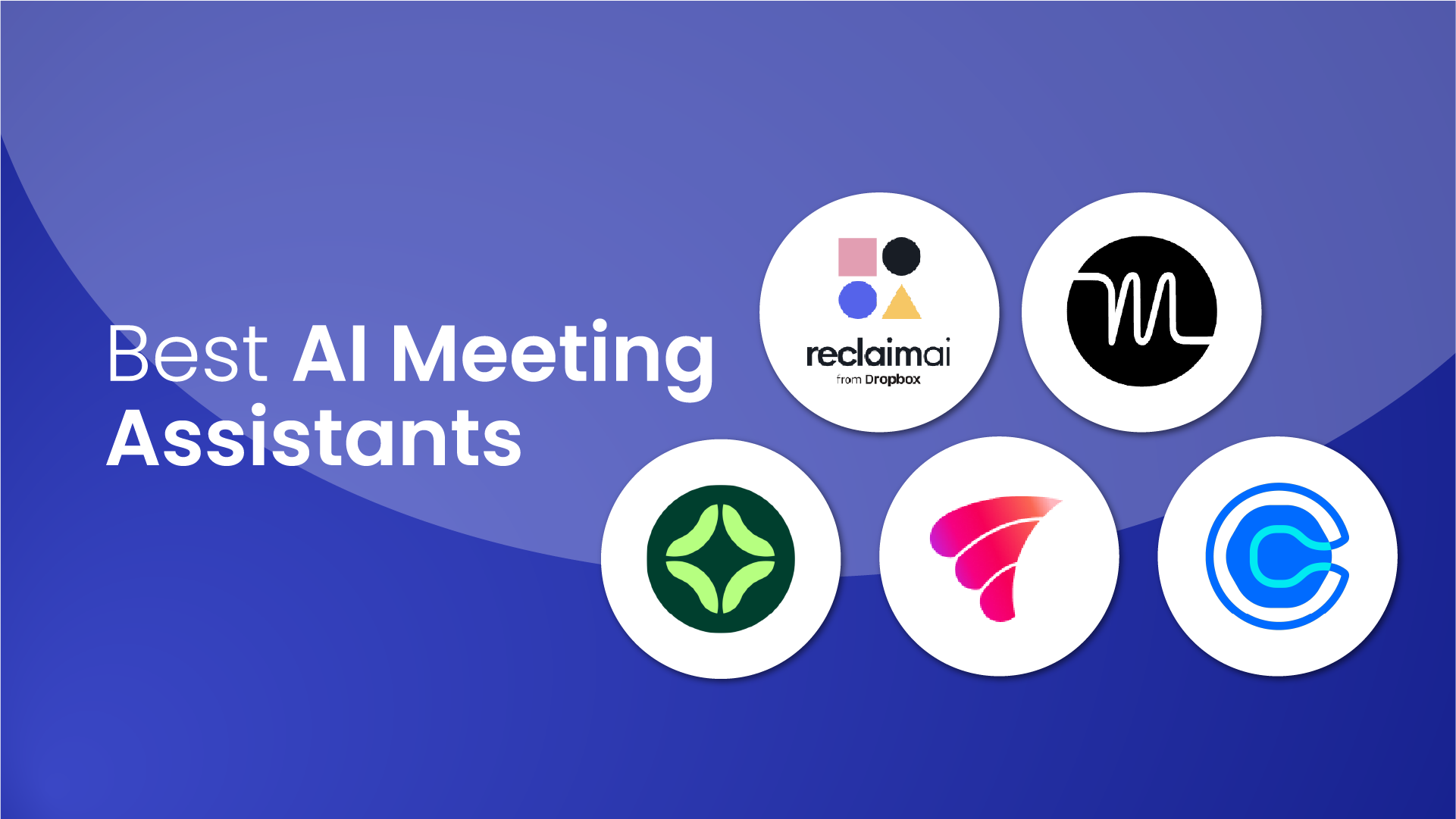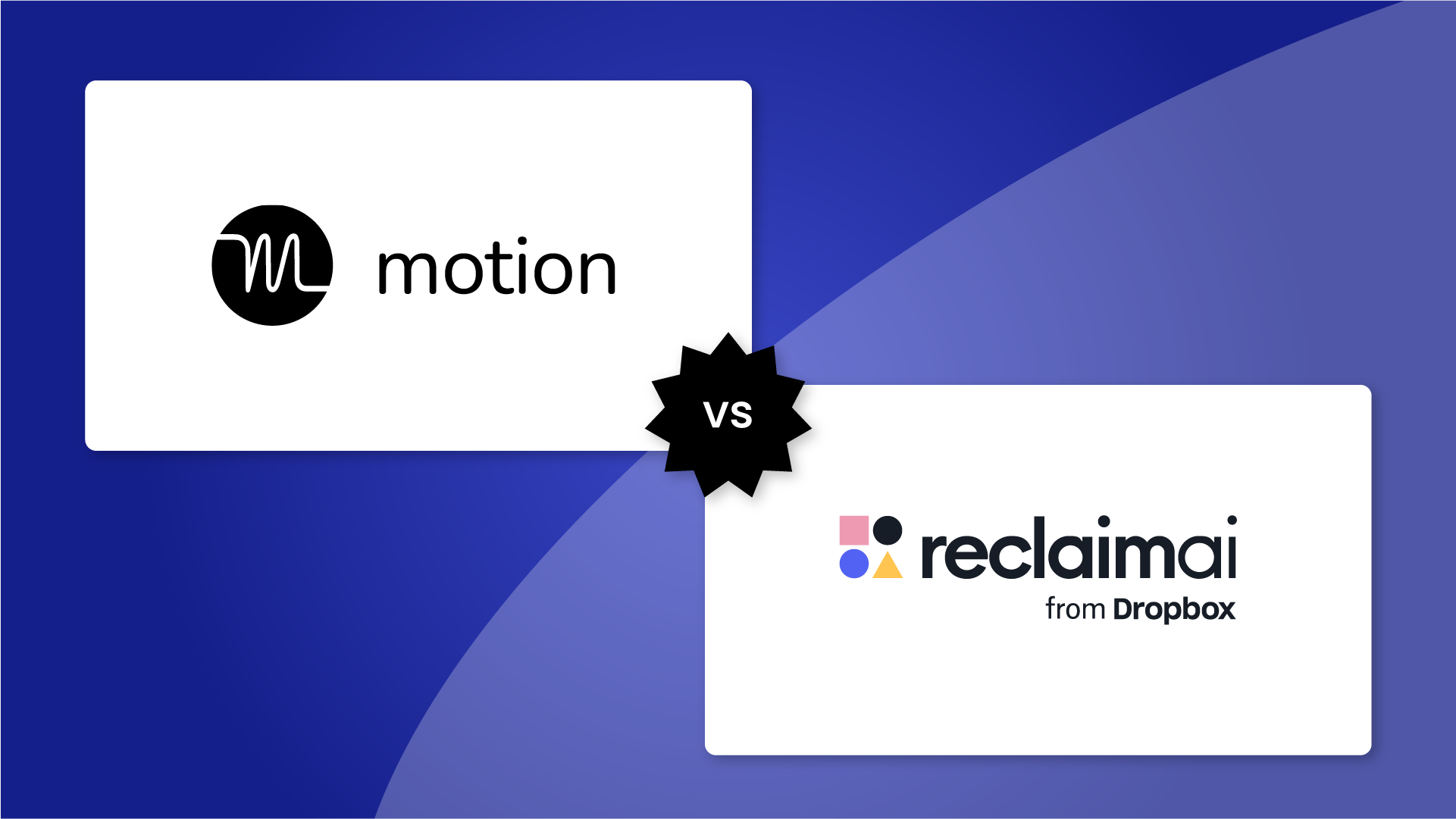When you think of workforce analytics, you probably imagine Human Resources (HR) and Operations data. But what about managers on the front lines leading the teams that drive the business forward? Or the executives who need to make heavy decisions that affect the entire organization? And how about the individual employees who are trying to prioritize and keep up with all their work?
Productivity analytics should be for everyone. The average full-time employee has to attend 25.6 meetings/week, only has time for 53.5% of their planned tasks/week, and works 47.6 hours/week just to get there. There’s never been a more pressing time to get a handle on productivity – and that starts with collecting the data you need to make real, impactful changes.
In preparation for our new Personal Time Tracking and People Analytics feature launches, we surveyed over 1,300 employees across executive, manager, and non-manager employee roles about what analytics they need to become more productive at work, and uncovered over 100 new stats for you to explore.
Let’s see the data!
Report Overview
- How do employees feel about time tracking?
- How do employees want to spend their time?
- Productivity insights for teams
- Top 8 productivity metrics that teams need
- Meetings analytics for teams
- Top 5 meeting type metrics that teams need
- Top 7 meeting performance metrics that teams need
- Work-life balance & burnout analytics for teams
- How many days of PTO are employees given a year?
- Notification fatigue insights teams need
- 11 action-oriented data metrics teams need
- Goal tracking metrics for teams
- Anonymous trends vs. individual employee time tracking
- Employee-friendly workforce analytics at Reclaim.ai
Looking for more productivity trends? Check out our Meeting Scheduling Trends Report, Setting Priorities Report, 1:1 Meetings Trends Report, Task Management Trends Report, or Burnout Trends Report.
How do employees feel about time tracking?
First, let’s take a look at how comfortable employees are with time tracking. Workforce time tracking has a bad reputation, because most employees believe their company is looking to catch them doing something wrong. Companies, for the most part, aren’t looking for individual low-performers, they want to identify trends across their entire workforce that may be affecting their productivity – for example, too much time in meetings, not enough time available for task work, or if employees are regularly working overtime and putting themselves at risk of burnout.
Let’s see how comfortable employees are with time tracking across different activity types:
Meeting time tracking is looking at the types of meetings, time spent in meetings, and average meeting duration. Time tracking for tasks/work routines looks more at completion rates, time spent/task, and overdue work. Finally, work-life balance tracking is analyzing overtime hours, high meeting rates, and if they’re taking enough PTO.
As we can see below, employee opinions about time tracking across meetings, tasks and routines, and work-life balance are strongly the same across each tracking type.
How do employees want to spend their time?
Employees understand all the work on their plates better than anyone, so we wanted to know – how would employees ideally like to spend their time every week to be most productive?
For most employees, they spend over half their workweek in meetings (25.6 hours/week to be exact). And while this is expected in some positions, like sales reps and managers, many employees shouldn’t be spending a majority of their time in meetings – they have work to do. Here’s what employees reported as their ideal amount of time in meetings/week:
While meetings tend to eat up most of the workweek, employees feel that they need 20 hours/week on average to focus on deep productive work. This doesn’t include the time they spend checking their emails, chatting in Slack, or updating their tasks list – this is 20 hours of uninterrupted heads-down work time on their challenging and cognitively demanding tasks. Unfortunately, employees only average 11.2 hours/week on productive work. Here’s what employees reported as their ideal amount of productive focus work hours/week:
Productivity insights for teams
How well do organizations really understand their employee’s productivity? Productivity is such a hard metric to quantify, but one of the biggest drivers for growth and success across your business. Without understanding productivity, your company can’t improve its performance.
We asked professionals across executive, manager, and non-manager roles to rank their ability on a scale of 1-10 of how well they understand their team's productivity using data today. Shockingly, only 13.7% of executives ranked themselves a 10/10 for fully understanding their employee’s productivity – and 56.7% of executives ranked their ability at a 5 or less.
The average executive ranked their ability at 5.3/10, compared to managers at 5.7/10, and non-manager employees at 5.2/10 for how well they understand their team’s productivity.
Top 8 productivity metrics that teams need
Let’s take a look at which insights organizations and teams want to capture around their productivity:
The number one productivity metrics sought by organizations is “what are the best hours for collaboration”. With 71.8% of all professionals wanting to simply understand when is a good time to connect and collaborate across their team, it’s clear that organizations need to be able to surface and prioritize meeting times better for employees, especially across a remote and globally distributed workforce.
The number two productivity metric needed by organizations is “what are the most productive times of the day or week”. Over two thirds of all employees, including managers and executives, want to know when are the most productive times for people to actually get stuff done. This is extremely important data, as teams need to defend those high-productivity hours from meetings so employees aren’t interrupted during their deep work sessions for their most challenging tasks that require intense concentration.
The third most important productivity metric organizations want to analyze is overall employee meeting load. How many meetings are we attending each week, which types of meetings are eating up the most time, and how long do we spend in each meeting? The average employee has to sit through 21.5 hours of meetings/week – that’s over 4 meetings/day, often scattered throughout the workday. No wonder employees can’t keep up with their task lists and are forced to work overtime.
Fourth on the list is analyzing employees at risk of burnout. Almost 60% of organizations are after this data to prevent unnecessary turnover with their employees. It may seem hard to predict, but of course there are telltale signs. How many hours of overtime are employees averaging week-to-week, are they stuck in back-to-back meetings all day, managing a wildly unrealistic task load, or getting bombarded with interruptions all day. Gathering this data can help your team get in front of these issues and dramatically reduce burnout on your team – especially since 60.2% of employees are burned out.
Well over half of organizations, at 59.0%, want to analyze how much time their teams and employees actually need to get through all of their tasks. Capacity planning is one of the hardest things to measure across a team, mostly because it isn’t analyzed closely enough with availability – how much time is really open in their schedules for their work. By estimating and tracking time to completion around tasks, teams can significantly improve their capacity planning and assign a realistic, manageable workload to employees so they’re not forced into overtime, rushing through projects, and making mistakes.
As it’s said, if you want something done – give it to a busy person. Well, that may be the case, but that busy person is going to have to kick something else down the road if they’re taking on a new project. 56.3% of organizations want to analyze how much bandwidth employees actually have for additional work so they can evaluate if they’re the right person for the task, or if another team member has free time available to take it on instead.
Almost 50% of organizations want better data around which tasks or activities are being prioritized across the team. Most teams are juggling multiple projects at once, and within those, a complex web of tasks that are all interconnected and often dependent on each other to progress. Organizations, managers, and employees need better visibility into what’s being prioritized by everyone so they can work in harmony instead of hitting blockers at every corner.
How much does vacation or health breaks impact productivity? While you may think the opposite, ensuring employees have time away from work is actually super critical to long-term productivity across teams. Almost one third of organizations want to ensure and encourage employees to take their PTO and a couple breaks every day to recharge their batteries so they can reduce burnout and improve employee happiness and tenure for their company.
Meetings analytics for teams
It’s well known that meetings are often the biggest offenders of productivity. Whether it’s a quick sync on a question that interrupts five people from their work, or an unproductive team status meeting where everyone loses an hour to give a two minute report on what they’re working on. A majority of these inefficient meetings could easily be replaced with asynchronous communications – so you don’t have to steal your teammates time. The meeting problem is so bad, it costs organizations $25,000/year for each employee on average for time lost in unproductive meetings vs. focusing on their actual work.
Yet hardly any organizations are tracking their meetings data or performance. Let’s see how well companies understand the cost of their employee’s meeting load.
We asked executives, managers, and non-manager roles to rank their ability on a scale of 1-10 of how well they understand their team's meeting load using data today. Less than one eighth of executives ranked themselves a 10/10 for fully understanding their meeting load – and less than a quarter of executives at 24.7% ranked themselves an 8 or above out of 10 for understanding meetings.
Managers understand their team’s meeting load a bit higher at 29.7% for an 8/10 or above, and 17.0% who ranked a 10/10. But non-manager employees ranked lowest at just 10.3% who fully understand their team's meeting load, and only 23.7% that ranked an 8/10 or better.
Top 5 meeting type metrics that teams need
There are many different meeting types on the calendar – and among those, ones that are productive and unproductive. How do you tell which meetings are worth your team’s time? First, you need to understand how many of each meeting type employees are attending week-over-week, and how much time they spend in each.
As a general rule of thumb, you want to keep your team meetings under control – these should be analyzed at least once a quarter to make sure that redundant recurring meetings aren’t still sitting on the calendar.
One-on-one meetings on the other hand should be prioritized. This is invaluable time employees have to spend with their managers to discuss blockers, get guidance on tasks, and plan their workload to ensure they’re on track for their individual goals. The big consideration here is frequency – and how often you need to meet one-on-one depends on your team members' needs.
External meetings need to be evaluated by role. Of course, you want your sales team to be spending as much time as possible connecting with clients. But if you’re managing a support team that is taking too many calls for simple issues that could be resolved by sharing a help doc, this could indicate you need to optimize access to these resources for your users.
Recurring vs. one-off meetings are also important to track, as recurring group meetings are often best set with an end date (such as project completion), and one-off meetings are a good way to keep more recurring meetings from plaguing the calendar – as long as team members try to resolve asynchronously first, whenever possible.
Virtual vs. in-person meetings are interesting, and likely depend on your team. If you’re in a hybrid environment, these are especially important to try to coordinate in-person meeting times so employees can focus on deep work when they are working from home.
Top 7 meeting performance metrics that teams need
Outside of meeting types, there are many additional data points organizations need to be considering around their meeting culture and performance to control the cost of meetings eating into team productivity:
If you were to analyze who you meet with most frequently, you would likely find that you spend a majority of your time with the same people week-over-week. Instead of having multiple team members attend the same meetings, send one rep from your team who can asynchronously report back a summary to your group.
Prioritizing meetings is hard, but necessary. And when you need to prioritize an urgent meeting over another, you’re faced with canceling or rescheduling. This is where an AI calendar app like Reclaim.ai can help your team automatically surface availability for urgent meetings over meetings that could be skipped or rescheduled, and automatically adjust your conflicts as they come in. You can also automate no-meeting days for your team to ensure everyone has a solid day for uninterrupted productivity.
Work-life balance & burnout analytics for teams
With 60.2% of employees burned out, work-life balance is a top priority for organizations to prevent turnover – and reduce the resulting burden of departed employees' workload being reassigned across your already over-stressed remaining team.
So how well do organizations really understand their teams work-life balance and burnout levels?
We asked executives, managers, and non-manager roles to rank their ability on a scale of 1-10 of how well they understand their team's burnout rates and work-life balance status at their company today. Only 11.3% of executives fully understand work-life balance and burnout across their employees – and 38.8% rank their understanding at a 3/10 or less.
As managers work more closely with team members, 17.0% fully understand their team's work-life balance and burnout status, but still 32.3% rank their understanding at a 3.10 or less. And only 10.3% of non-manager employees fully understand burnout and work-life balance across their team, with 37.1% who rank themselves at a 3/10 or less.
How many days of PTO are employees given a year?
One of the biggest causes of burnout is lack of time off – 52.2% of employees burn out before they don’t have enough PTO and work-life balance at their company. We wanted to know, how much PTO are employees allowed each year, let’s take a look:
While a majority of employees get 11-30 days of PTO each year, a shocking 38.5% of employees get only 10 or less days – which is likely attributed to their early career status. It is great to see over 18% companies are offering over 31 days of PTO a year, and 6.2% even go as far as offering unlimited PTO to prevent burnout and turnover across their teams. The problem with unlimited PTO though is that employees are afraid to use it because it is undefined, so we recommend encouraging employees to regularly take days off, or offering a generous PTO package so employees feel comfortable taking personal days.
Notification fatigue insights teams need
In order for employees to actually get into a productive state, they need to work without interruptions. 59.9% of employees are burned out from too many notifications and distractions throughout the workday. Organizations want to limit these interruptions for both productivity and burnout alike. Here are the top notification fatigue metrics that companies are looking for:
While Slack is highly productive for asynchronous communication, it’s also the biggest distraction employees face. Allowing employees to sync their Slack status to their calendars, and auto-setting DND for certain event types or hours, is a huge defender for these costly interruptions.
11 action-oriented data metrics teams need
Data is great, but it needs to be actionable for it to matter. Here are the top 11 actionable metrics that organizations and teams want to boost their productivity:
All of these insights are not simply a number or a chart – but a recommendation based on their team's past performance, engagement, and potential impact. These actionable metrics are the big challenges and decisions teams are facing every day to try to boost productivity, optimize their meetings, and improve work-life balance for employees.
Goal tracking metrics for teams
How important are goals when tracking employee productivity? When monitoring performance, it’s incredibly important for both employees and management to be able to see how well their teams are able to reach their goals. If employees and teams are falling behind on goals, it’s important to catch this early so you can provide more support, resolve blockers that are slowing the project down, and optimize your capacity planning to set more realistic goals for your team.
Overall, a vast majority of employees want to be able to set and track goals around their important work items. Only 12.0% of employees ranked the importance of goal setting at 4/10 or lower, with 81.5% ranking at a 6/10 or higher.
Anonymous trends vs. individual employee time tracking
As mentioned above, most organizations are looking to analyze high-level trends in their employees' performance using historical time tracking data. We wanted to analyze comfort levels across different productivity metrics to see how employees feel about their company’s tracking their time vs. analyzing anonymous trends across time.
As we can see below, employees are overall very comfortable with anonymous historical time tracking for task stats, focus time, meetings, work habits, and even free time on their calendars. How much personal time, travel time, and PTO time reported significantly lower.
Meeting time, task stats, and focus work time also ranked highest for individual time tracking, though considerably lower than in an anonymous historical analysis. Employees also felt less comfortable having their company’s track their free time, personal time, travel time, PTO, and habits completed individually vs. an anonymous analysis over time.
Employee-friendly workforce analytics at Reclaim.ai
At Reclaim.ai, we recently launched an updated Personal Time Tracking feature for individual users, and People Analytics with anonymous trends data for teams and companies. As an AI calendar that finds the best time for your tasks, habits, meetings, and breaks across your existing Google Calendar or Outlook Calendar, we’re able to automatically collect rich data around how people really spend their time each week, and help them improve their schedules to become more productive each day.
And what’s different about Reclaim (and why employees love it so much) is that only employees their can see their individual time tracking metrics – our People Analytics (used by managers and organizations) analyzes anonymous average trends across the workforce or team so they can identify problems, without intrusively monitoring every minute of each employees day.
In order to see the impact of this launch, we ran a post-beta survey to analyze how individual employees and teams alike were able to improve their workweeks through smart time tracking analytics. Here is the data:
Time tracking ROI for Individual employees using Reclaim.ai
This analysis is on individual users, where we asked how much better they can understand how their time is spent using the new My Stats time tracking feature:
Time tracking ROI for employers & managers using Reclaim.ai
This analysis is on teams and managers who are analyzing their teams time across our Team Stats - People Analytics feature:
Actionable ROI metrics using Reclaim.ai time tracking
We also asked users what changes are you making to your work schedule to improve your productivity using the new time tracking features at Reclaim.
Get started with workforce analytics & employee-friendly time tracking
If your organization's leadership, managers, and even individual employees are struggling to understand how people spend their time throughout the workweek, get started with an employee-friendly time tracking solution like Reclaim.ai. You’re not only gathering actionable data about the productivity health of your teams, you’ve giving each team the tools they need to boost their productivity, get their meetings under control, and improve their work-life balance so your entire organization can become more successful.
Connect your calendar to get your analysis, and invite your team to see how much time on average everyone is spending in meetings vs. productive work.
At Reclaim.ai, we’re focused on helping busy teams tame their complex, and ever-changing schedules by helping them optimize their calendars around their true priorities, and gathered this research to better understand the biggest issues people face in coordinating the incoming meetings on their calendars. To learn more about the complexities of managing a chaotic schedule in the modern workplace, check out our other recent trends reports:









































